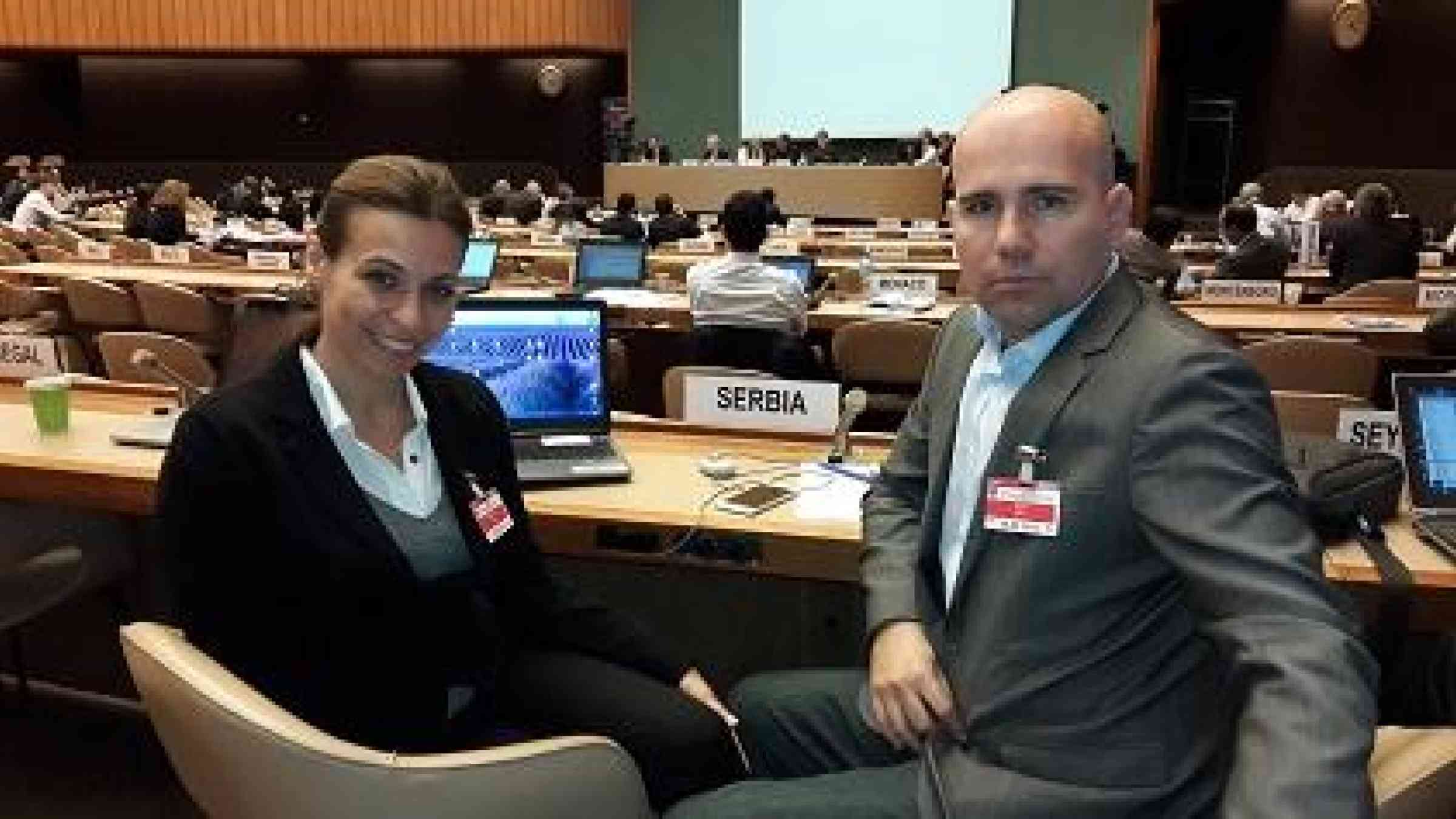Please help us improve PreventionWeb by taking this brief survey. Your input will allow us to better serve the needs of the DRR community.
Serbia to turn Sendai Framework into law

Sandra Nedeljkovic, Deputy Director of Serbia’s Government Office for Reconstruction and Flood Relief, and Ivan Baras, Assistant Head of Sector for Emergency Management, at expert talks on Sendai Framework in Geneva (Photo: UNISDR)
GENEVA, September 30, 2015 - Serbia aims to become the first country to incorporate all aspects of the Sendai Framework for Disaster Risk Reduction into national legislation following its experience with devastating floods last year.
A public debate on the new Law on Disaster Risk Reduction and Emergency Management will take place on October 13, International Day for Disaster Risk Reduction. This will be followed by three more public debates before the law is brought before the National Assembly in November.
The ambition was shared today by the Serbian delegation attending the intergovernmental expert working group on indicators and terminology relating to disaster risk reduction which is meeting formally for the first time in Geneva.
The Sendai Framework is a global blueprint adopted at a UN World Conference in Sendai, Japan, in March, 2015. It lays out seven targets for achieving a substantial reduction in mortality, numbers of people affected, economic losses and damage to critical infrastructure. Work on Serbia's new law began following the World Conference.
The announcement was made by Mrs. Sandra Nedeljkovic, Deputy Director of Serbia’s Government Office for Reconstruction and Flood Relief, who said that the trigger for the new law was the 2014 floods which affected 22% of the population and forced 32,000 families from their homes.
“We have been working very closely with experts from UNDP to ensure that we incorporate all aspects of the Sendai Framework into the new law. We adopted a National Disaster Risk management plan in December 2014 and we are working on an action plan which is why the expert discussions taking place here on indicators are very important for us as it will guide our own efforts,” she said.
Mrs. Nedeljkovic added: “The country suffered $1.2 billion in direct losses and $1.7 billion in recovery costs so to avoid a repeat of that we are switching the emphasis from disaster management to disaster risk management as outlined in the Sendai Framework.
“Serbia has taken a number of steps including the construction of 29 dams which will contain the floodwaters in the future and block the passage of debris and mud which caused so much damage last year. We are in the process of developing flood maps for the country with the support of EU funds. We are on the way to building our resilience to floods and other disasters.”
Mr. Ivan Baras, Assistant Head of Sector for Emergency Management, said that the flash floods in May, 2014, occurred when the Sava, Kolubara and Tamnava river systems overflowed. Flash floods occurred again in September.
Explore further
Also featured on
Please note: Content is displayed as last posted by a PreventionWeb community member or editor. The views expressed therein are not necessarily those of UNDRR, PreventionWeb, or its sponsors. See our terms of use
Is this page useful?
Yes No Report an issue on this pageThank you. If you have 2 minutes, we would benefit from additional feedback (link opens in a new window).